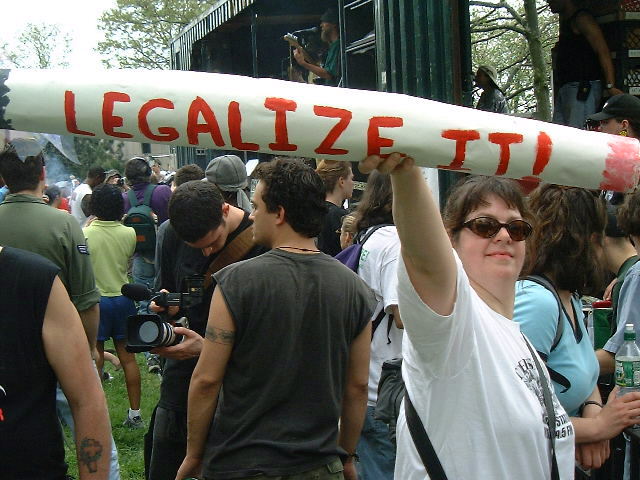With legal marijuana rolling along in Washington and Colorado, new states are expected to legalize over the next few years. California is near the top of the list, and it could happen here as early as the fall.
But even as the state’s cannabis advocates push their proposals for the November ballot, the questions linger: Are they moving too fast? Will voters be ready for the relatively radical proposals some of them are advocating? Can they succeed without the support of major national organizations?
One thing is already clear: Californians are ready for legalization. Polls conducted last year show a clear majority of the state’s residents, and an even larger majority of voters, support legal weed.
California has had medical marijuana for 18 years, a program critics allege provides pot to anyone who wants it. That “problem” will likely work in favor of legalization, since voters already know the public can handle weed without major problems.
But that doesn’t mean Californians are ready for the ballot initiatives that are currently on the table. There are four of them, and the two that have advanced the furthest are the most radical, and probably the least likely to gain traction with voters.
One, the Marijuana Control, Legalization and Revenue Act, affords numerous protections to users and providers but few regulations on the industry. Another, known as the Jack Herer act, would allow residers to grow up to 99 plants plants and possess up to 12 pounds of weed per year – far more than any other recreational system in the country.
Supporters of both those proposals are currently gathering signatures from voters. They need at least 500,000 signatures to get their proposals on the ballot. Organizers of the Jack Herer initiative had gathered more than 200,000 by mid January.
But neither petition has substantial financial support from national groups, or even from major statewide groups. And without significant regulation, it’s possible skeptical voters wouldn’t support either one.
That leaves the other two petitions, both still awaiting initial approval from state election officials. Even if they win that approval, supporters have only a brief window to collect signatures, possibly too brief.
 Circulating petitions across California in such a short period of time would require major financial resources, something supporters of the Cannabis Policy Reform Act lack. Like backers of the Control, Regulate and Tax Marijuana Act of 2014, they’re waiting for clearance from election officials.
Circulating petitions across California in such a short period of time would require major financial resources, something supporters of the Cannabis Policy Reform Act lack. Like backers of the Control, Regulate and Tax Marijuana Act of 2014, they’re waiting for clearance from election officials.
Both these groups promise relatively tight regulations on possession, cultivation and sale. Some cannabis advocates consider the rules proposed by the Drug Policy Alliance, which backs the Control, Regulate and Tax Marijuana Act, too tight. They include a limit of one ounce and six plants per adult over 21.
The Drug Policy Alliance is the only group with major financial backing, making its initiative the most likely to succeed – if it can make the ballot. But that may not happen, leaving many to wonder whether California, with its long history of regulatory problems in medial marijuana, will instead choose a proposal with few rules – a scheme that would likely draw the ire of the federal government.
That’s why many advocates want to take a break until 2016. Lt. Gov. Gavin Newsom and the state’s branch of the ACLU, leaders in the state’s legalization movement, plan to propose a ballot initiative that year with the full weight of the national cause.
 California Marijuana Market Breaking "Marijuana News" from CA
California Marijuana Market Breaking "Marijuana News" from CA


